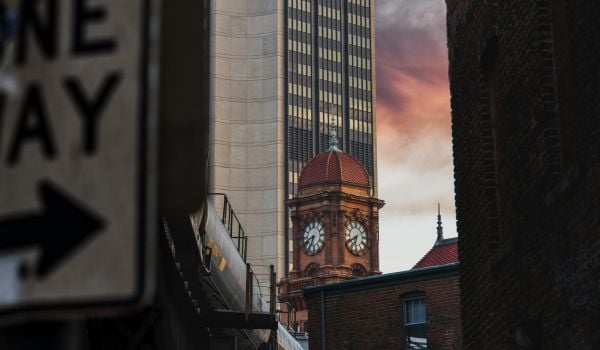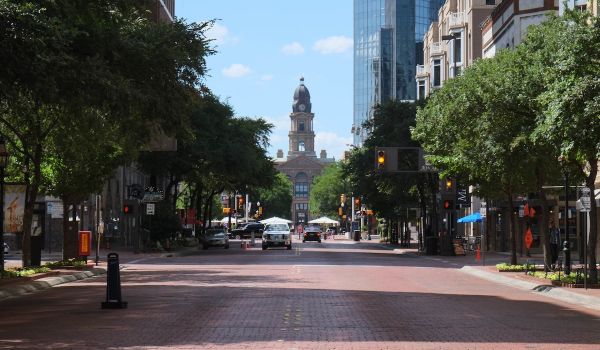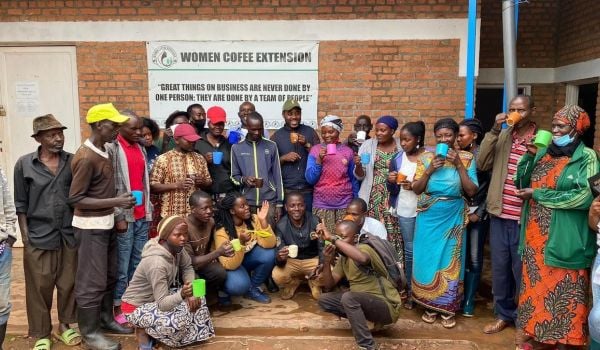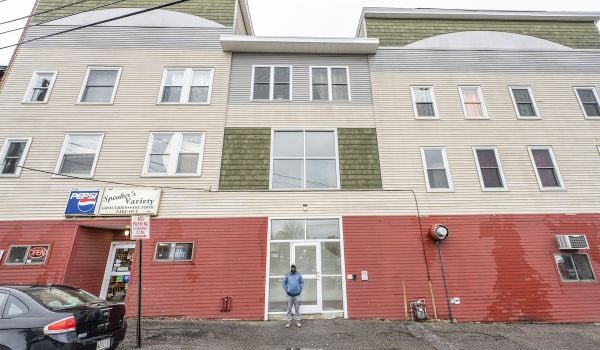If you’ve ever had someone co-sign a loan for you, then you know how a guarantee works. That other person, maybe a parent or relative, is promising the bank that in case you can’t make your monthly payment, they’ll make the payment in your place. If all goes well, your parent or relative may never need to step up for you. This process is often a formality, but it can also be a prohibitive barrier if you don’t have a parent or relative with good credit.
Guarantees are a very common tool to support financial institutions themselves. The Federal Deposit Insurance Corporation, for example, insures bank deposit accounts up to $250,000 — so if a bank ever gets shut down, the FDIC promises to pay up to that amount to account holders. Deposit insurance is one form of a guarantee.
Out of $13 trillion deposited at banks in the U.S., the FDIC insures $7.7 trillion. The National Credit Union Administration similarly insures all but a sliver of the $1.29 trillion deposited at credit unions across the United States. By providing guarantees in the form of deposit insurance, these two federal agencies silently but steadily support banks’ and credit unions’ ability to attract more and more deposits from people and businesses every year.
But, even decades after the formal end of redlining and the passage of laws intended to create equal access to credit, mainstream banks and credit unions aren’t investing in communities equitably. The new Community Investment Guarantee Pool, created by a collaborative of nine philanthropic organizations, a health system and a nonprofit lender, hopes to harness the power of guarantees to support financial institutions with a mission to serve people and communities that mainstream financial institutions don’t.
The Community Investment Guarantee Pool combines resources from the eleven current members into $33 million in available guarantees, but anticipates that amount growing up to $75 million — which it plans to award in six rounds of applications over the next three years. Organizations applying for guarantees should be working in affordable housing development or preservation, small business investment, or addressing climate change. The pool expects to announce the first round of three guarantee recipients in the next few months, followed by a second application round later this year.
The pool members expect that the guarantees they provide as a group will enable financial institutions to attract other dollars, adding up to at least five times the value of the guarantees themselves. Beyond that, the pool members also hope that they can build out a model for other foundations and health systems and lenders can use to form guarantee pools for community development on a regional or local scale.
“The home run would be creating an ongoing, self-sustaining infrastructure to provide these guarantees,” says Teri Lovelace, president of LOCUS Impact Investing, the group contracted to administer the Community Investment Guarantee Pool.
For the foundations in the group, led by the Kresge Foundation, the Community Investment Guarantee Pool is the latest step in what has been a multi-year journey. (The Kresge Foundation also funds Next City.)
Kresge commissioned a study by the Global Impact Investing Network, published in 2017, called “Scaling the Use of Guarantees in U.S. Community Investing.” The study compiled four in-depth case studies of foundations using various forms of guarantees and highlighted on a few other examples of guarantee programs meant to serve underserved communities — with varying degrees of success.
The U.S. Small Business Administration’s 7(a) loan guarantee program, for example, was created to encourage lenders to make small business loans to borrowers who would otherwise not qualify for small business loans. But while the program has become relatively well-known among small business lenders and economic development circles, it has long struggled to reach underserved populations. In 2019, black and Latino borrowers received just three and six percent of 7(a) guaranteed lending, and women just 14 percent.
The four case studies of foundation-led guarantees showed some promise, but remained limited in terms of producing standardized documentation and processes that could be applied beyond specific sectors and uses. The case studies included one example of a guarantee supporting federally qualified health centers, one supporting energy efficiency upgrades, and two examples of guarantees supporting affordable housing through two entirely different guarantee structures.
The study led to a working group of foundations and financial institutions that continued exploring the use of guarantees.
“Everybody found themselves reinventing the wheel at each place because guarantees are just different from the kind of transactions foundations typically go through,” says Joe Evans, portfolio manager in the social investment practice at the Kresge Foundation. “It’s not investment earnings, not a grant, not a program expense.”
Foundations in the U.S. hold around $890 billion dollars in their endowments — accumulated over time from the tax-deductible contributions from donors. To keep their tax exempt status, each foundation has to spend at least 5 percent of the value of its endowment every year on operations and program expenses, including grants. The remaining 95 percent every year gets invested in stocks, bonds, real estate, private equity funds and other assets to generate income that can be spent or re-invested in future years.
Some foundations, including Kresge, are coming around to the fact that they can be more intentional about finding ways to invest that 95 percent into communities that have long been denied equal access to capital.
Kresge and the other foundations in the Community Investment Guarantee Pool are hoping to demonstrate that the 95 percent can also serve an additional purpose beyond generating income to spend on future programming. That money can also serve as collateral on behalf of financial institutions aligned with the foundations’ missions but that don’t have their own deep wells of cash.
Essentially, each member of the guarantee pool is pledging to pay out a specific dollar amount if a community financial institution suffers any financial losses from a loan gone bad or a broader economic downturn. If all goes well, though, the foundation providing the guarantee doesn’t need to pay anything — nor does it get any payment from the financial institution receiving the guarantee. Technically, this arrangement is known as an “unfunded guarantee.”
The Community Investment Guarantee Pool will consist entirely of unfunded guarantees. The group is betting that this will make the most sense to turn guarantees into a more common practice, not just for foundations but also health systems, university endowments, and other groups with deep pockets.
For private foundations, unfunded guarantees don’t get counted as part of the required 5 percent annual spending threshold unless a guarantee needs to be paid. Kresge, which has been using unfunded guarantees to further its mission over the past few years, recently did have to pay out to cover a loss on a transaction it had guaranteed. In that case, the payment simply got counted as part of Kresge’s annual spending threshold, Evans explains.
For a health system, in this case CommonSpirit Health, which operates in 21 states, it’s simply a pledge to cover somebody else’s losses — just in case.
The pool members are committed to keep their commitments in place for at least 15 years. Each member isn’t risking their entire balance sheet — Evans explains there is a cap that’s about 1-2 percent of each institution’s “noncharitable” assets. Kresge itself has pledged $10 million to the pool.
All the members are also sharing in the initial startup costs for LOCUS Impact Investing to manage the pool, but over time the hope is that the operations can become self-sustaining based on a fee charged to each guarantee recipient, between 1-2 percent of the guarantee amount.
Each unfunded guarantee will have an expiration date, probably 5-7 years for small business lenders, 10 years for real estate lenders, says Lovelace at LOCUS. The minimum guarantee amount is $1 million, meaning applicants will have to have a plan to raise a minimum of $5 million from others, which could come from insurance companies, private investors, or even banks.
“We’re looking to the field to figure out where are the innovative uses, where is the capital that could be unlocked, what else is out there,” Lovelace says.
The pool members’ highest aspiration is for unfunded guarantees to become another standardized way that foundations and other larger institutions with deep pockets can support their surrounding communities, alongside grants or corporate giving, contracts and procurement, and direct investments.
The guarantee pool is also relatively novel in another way. The pool members are giving up the power to pick specific projects and businesses that benefit from the guarantees provided. The guarantee covers investments into the lending institutions themselves — the same way federal deposit insurance covers all bank accounts up to a certain dollar threshold.
“Just like the projects in communities that face structural barriers in our finance system, the smaller minority-led [community development lenders] we heard from particularly that they think they could use this facility to reach beyond the ‘usual suspects,’” Evans says.
The onus will be on LOCUS Impact Investing to find lenders that have relationships and skill sets necessary to finance projects that benefit communities that need it most. Or lenders that already have existing relationships with businesses owned by women and people of color that remain mostly locked out of existing conventional sources of capital.
“You’ve got to balance between impact and financial strength,” Lovelace says. “But we’re particularly looking for intermediaries led by people of color and/or have a strong racial equity lens on their leadership and board.”
This article is part of The Bottom Line, a series exploring scalable solutions for problems related to affordability, inclusive economic growth and access to capital. Click here to subscribe to our Bottom Line newsletter.

Oscar is Next City's senior economic justice correspondent. He previously served as Next City’s editor from 2018-2019, and was a Next City Equitable Cities Fellow from 2015-2016. Since 2011, Oscar has covered community development finance, community banking, impact investing, economic development, housing and more for media outlets such as Shelterforce, B Magazine, Impact Alpha and Fast Company.
Follow Oscar .(JavaScript must be enabled to view this email address)






_600_350_80_s_c1.jpg)











